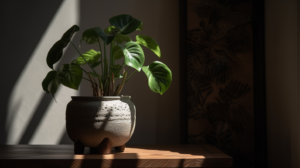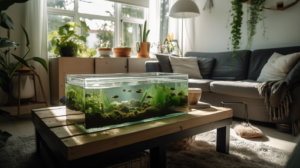Effective Pest Control Solutions for Your Indoor Garden
Indoor gardening can be a rewarding and therapeutic hobby, but dealing with pests can be a challenge. Knowing how to effectively control pests in your indoor garden is essential for maintaining healthy and thriving plants. In this article, we’ll discuss the most common pests that invade indoor gardens, how to minimize their impact once they’ve infected a plant, and strategies for avoiding pests in the first place. We’ll also share tips on the most likely causes of pests and how to address them.
Most Common Pests in Indoor Gardens and Their Impact
Indoor gardens can be susceptible to various pests that can cause damage to your plants. Below is a list of the most common pests found in indoor gardens, along with a brief description of each and their impact on your plants:
1. Aphids
Aphids are tiny, pear-shaped insects that can vary in color, including green, yellow, black, or white. They feed on plant sap, causing leaves to curl, wilt, or turn yellow. Aphids can also transmit plant viruses and secrete honeydew, leading to the growth of sooty mold on your plants.
2. Spider Mites
Spider mites are minuscule, eight-legged arachnids that appear as tiny specks on your plants. They feed on plant sap, causing leaves to develop yellow or bronze spots and eventually drop off. A severe spider mite infestation can lead to plant death, and they are notoriously challenging to control due to their rapid reproduction.
3. Fungus Gnats
Fungus gnats are small, dark-colored flies that lay their eggs in moist soil. The larvae feed on plant roots and organic matter, which can cause stunted growth, yellowing leaves, and reduced plant vigor. Adult fungus gnats can also spread plant pathogens, leading to further damage.
4. Whiteflies
Whiteflies are tiny, white, moth-like insects that feed on plant sap, causing leaves to yellow, curl, and eventually drop off. Like aphids, whiteflies excrete honeydew, leading to sooty mold growth and can transmit plant viruses, further harming your indoor garden.
5. Scale Insects
Scale insects are small, flat, oval-shaped insects that feed on plant sap, causing yellowing leaves, stunted growth, and reduced plant vigor. They often appear as small, immobile bumps on plant stems and leaves. Some species of scale insects also produce honeydew, leading to sooty mold growth.
6. Mealybugs
Mealybugs are small, soft-bodied insects covered in a white, powdery wax. They feed on plant sap, causing leaves to yellow, curl, and drop off. Mealybugs can also secrete honeydew, resulting in sooty mold growth and attracting ants, which can protect the mealybugs from natural predators.
7. Thrips
Thrips are tiny, slender insects with fringed wings that feed on plant sap, causing leaves to develop a silvery or mottled appearance. Thrips can also transmit plant viruses and cause flower buds to deform or drop off, impacting the overall health and appearance of your indoor garden.
By knowing the most common pests in indoor gardens and their effects on your plants, you can better monitor and manage any potential infestations to maintain a healthy and thriving indoor garden.
Minimizing Pest Impact on Infected Plants
If you notice signs of pest infestation on your indoor plants, it’s essential to act quickly to minimize the damage. Here are some steps you can take to control pests in your indoor garden:
- Inspect your plants regularly for signs of pests and remove any affected leaves or stems immediately.
- Isolate infected plants to prevent the spread of pests to other plants in your indoor garden.
- Use a combination of physical removal methods, such as washing pests off with water or using a soft brush to dislodge them from leaves and stems.
- Employ natural pest control methods, such as introducing beneficial insects like ladybugs or lacewings, or using homemade remedies like a diluted soapy water spray.
- Use chemical insecticides for interior gardens as a last resort, following the product instructions carefully to minimize harm to your plants and the environment.
How to Avoid Pests in Your Indoor Garden
Prevention is always the best strategy for maintaining a healthy and pest-free indoor garden. Here are some tips to help you avoid pests:
- Choose healthy, pest-free plants when starting your indoor garden.
- Inspect new plants for pests before bringing them into your home.
- Maintain proper hygiene in your indoor garden by keeping your plants and growing area clean and free of debris.
- Ensure adequate airflow around your plants, as pests are more likely to attack plants in stagnant air.
- Water your plants appropriately to avoid creating conditions that attract pests, such as overly damp soil or standing water.
- Regularly monitor your plants for signs of pests and take action immediately if you notice any issues.
Most Likely Causes of Pests in Indoor Gardens
Pests can invade your indoor garden for various reasons. Understanding these causes can help you address and prevent future infestations. The most likely causes of pests in indoor gardens include:
- Introducing new plants that are already infested with pests.
- Overwatering or underwatering your plants, creating stress that makes them more susceptible to pests.
- Improper ventilation, which can create stagnant air and promote pest infestations.
- Poor sanitation in your indoor garden, such as not removing dead leaves or debris, which can provide hiding places for pests.
- Using contaminated tools, pots, or soil that harbor pests or their eggs.
By addressing these causes and maintaining proper care for your indoor plants, you can significantly reduce the risk of pest infestations in your indoor garden.
Effective pest control is essential for maintaining a healthy and thriving indoor garden. By understanding the most common pests, employing preventative measures, and addressing infestations promptly, you can keep your indoor plants healthy and pest-free. Remember to regularly inspect your plants and maintain proper care practices to prevent pests from invading your indoor oasis.
Pest Control for Indoor Gardens FAQs
1. What are some natural pest control methods for indoor gardens?
Natural pest control methods include introducing beneficial insects, such as ladybugs and lacewings, using homemade remedies like a diluted soapy water spray, or employing physical removal techniques like washing pests off with water.
2. Can I use chemical insecticides for my interior garden?
Chemical insecticides can be used for interior gardens, but they should be a last resort. Be sure to follow the product instructions carefully and use them in a well-ventilated area to minimize harm to your plants and the environment.
3. How often should I inspect my indoor plants for pests?
Regularly inspecting your indoor plants for pests is crucial to maintaining a healthy garden. Aim to check your plants at least once a week, paying close attention to the undersides of leaves and stems where pests often hide.
4. Can I use outdoor pest control methods for my indoor garden?
While some outdoor pest control methods may be suitable for indoor gardens, it’s essential to research and use methods specifically designed for indoor use. Outdoor pesticides can be too harsh for indoor plants and may pose risks to your health and the environment.
5. What should I do if pests keep returning to my indoor garden?
If pests persistently return to your indoor garden, reevaluate your plant care practices, such as watering, ventilation, and sanitation. Consider consulting an expert or seeking advice from a local gardening center to identify and address the root causes of your pest issues.
Related Articles


